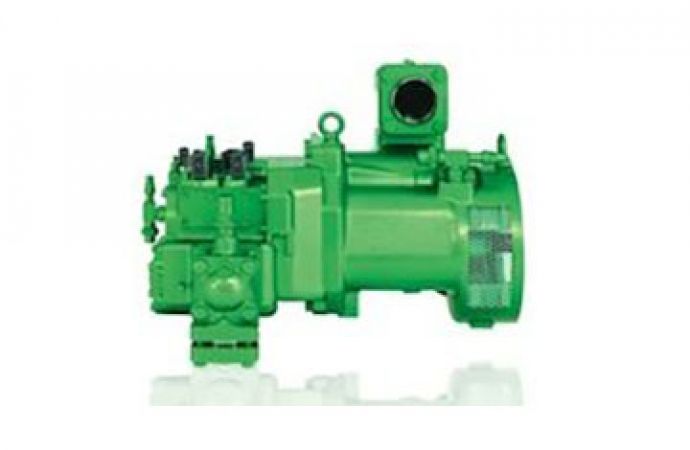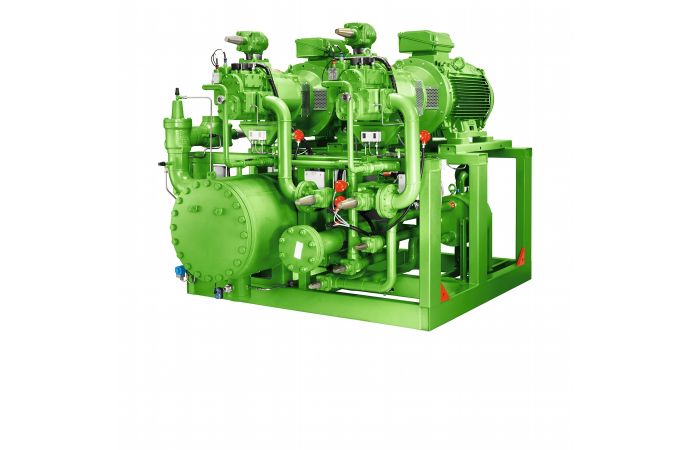ATMOsphere America 2015 outlined the acute need for expanded training programmes for natural refrigerants in the U.S., with the evolution of online training packages, upgraded curriculums pertaining to low charge ammonia, the expansion of allowable hydrocarbon applications following the 2015 EPA SNAP updates, as well as the increasing emergence of CO2 transcritical and subcritical systems in commercial and industrial refrigeration, driving the market and increasing demand.

A common theme among all five speakers on the training panel – from Hillphoenix, BITZER, RSES, Stark State College and RETA – is the necessity to equip contractors with knowledge about the regulatory compliance changes looming, and the various natural refrigerant technologies available to replace HFCs.
Low charge emergence sparking uptake of ammonia
BITZER’s Joe Sanchez explained that the company’s training courses in Germany, Brazil, Australia and U.S. were less specialised but rather catered to accommodate a broader variety of personnel from designers/engineers and technicians, to sales staff and end users.
“What’s great about being a compressor manufacturer is that we get exposed to a wide variety of applications, so we get to see a lot, and when we conduct training sessions we get a wide variety of questions and attendees. In a lot of cases we’re the jack of all trades and the master of none.”
BITZER focuses on low charge ammonia as well as CO2 (transcritical and subcritical) and highlighted the need to focus on larger ammonia applications and follow Europe’s lead.
“Some certification programs have already been set up relating to very low charge systems but for larger charges and applications we need more training and certifications,” Sanchez said.
“This will pave the way for these larger systems to come in the U.S. Things that we wouldn’t even think about in the U.S. they’re already doing in Europe with large flammable systems – this requires the correct knowledge and of course training.”
It was a similar story for Jim Price of the Refrigerating Engineers and Technicians Association (RETA) who mirrored sentiments to the effect that regulatory burden will inevitably shape the necessity for more training curriculums.
“As the refrigeration industry in the U.S. evolves towards more regulatory compliance requirements as well as increased use of other natural refrigerants other than ammonia, for the training of technicians to work with new and innovative systems there would be a need to update not only the content of the training but also the delivery methods.”
RETA’s online training courses have adapted to incorporate the Process Safety Management (limiting ammonia charge to 10,000 lbs/4536 kg) and Risk Management programmes, and cover ‘industrial refrigeration 1, 2 and 3’ as well as emergency response and hazard communication.
Dispelling safety myths, unearthing next generation technicians
In one of the more entertaining presentations, Hillphoenix’s Rusty Walker asked the audience: ‘is training really necessary?’ before launching into a flurry of questions and barriers manufacturers commonly encounter with contractors.
Working out of Hillphoenix’s Learning Center as a trainer, Walker said safety misconceptions regarding CO2, knowledge of system pressures, and making delineations between transcritical and subcritical systems for contractors were of vital importance in training programs.
“Is CO2 dangerous? The answer is, ‘yes of course it’s dangerous’ but we have to explain to contractors that’s it’s no more dangerous than R22 and R134a – because these are both very dangerous, but it doesn’t come across their minds,” Walker said.
Hillphoenix’s (online and instructor-led) CO2 courses have increased from 75 people trained in 2006 to 23,454 in 2014 with the expertise falling to the next generation of technicians.
“We’re a greying, maturing industry and we’re not getting young technicians in the field anymore. Hands on, hands on, and more hands on. Contractors are vigil learners and we have to be enable them to get their hands on the equipment.”
Stark State’s Jim Kalish outlined the Ohio college’s ‘neutral’ advanced CO2 training program, which came about due to a ‘void in the market’ whereby there were basically no trained technicians to install CO2 transcritical pilots, let alone maintain them.
Stark State decided not to align itself with any particular OEM, instead conducting advanced training on-campus or at company locations. The college expects the installation of a transcritical rack and a full CO2 lab to be completed in September to help train approximately 520 students involved in HVAC&R streams of education.
SNAP updates signal hydrocarbons shift
In light of EPA measures to phase out high-GWP (global warming potential) refrigerants and the EPA’s ruling to expand the use of four hydrocarbon refrigerants in the U.S., world-leading training organisations like RSES are seeing huge increases in demand for their services.
“Since 2012 we’ve trained approximately 1500 as of June 2015 and demand and enquiries for RSES’s training services have tripled since the regulations were introduced in March,” Arthur Miller, RSES, said from the conference in Atlanta.
RSES’s training program is designed to equip manufacturers, service technicians and installers in proper working practices with flammable hydrocarbon refrigerants such as propane and isobutane, but Miller admitted some contractors were well behind the eight ball.
“The technicians in the United States specifically really do not know what is hitting them. I was with an HVAC&R contractor, a friend of mine, at a picnic (recently) and I asked him: ‘Are you aware of what’s going on with the hydrocarbons and HFC R22?’ and he said: ‘huh?’. So there’s a lot of people way behind right now,” he said.
MORE INFORMATION
Related stories





